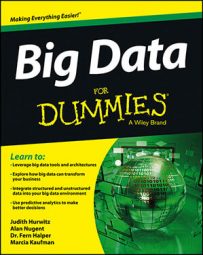Big data enables organizations to store, manage, and manipulate vast amounts of disparate data at the right speed and at the right time. To gain the right insights, big data is typically broken down by three characteristics:
Volume: How much data
Velocity: How fast data is processed
Variety: The various types of data
While it is convenient to simplify big data into the three Vs, it can be misleading and overly simplistic. For example, you may be managing a relatively small amount of very disparate, complex data or you may be processing a huge volume of very simple data. That simple data may be all structured or all unstructured.
Even more important is the fourth V, veracity. How accurate is that data in predicting business value? Do the results of a big data analysis actually make sense? Data must be able to be verified based on both accuracy and context. An innovative business may want to be able to analyze massive amounts of data in real time to quickly assess the value of that customer and the potential to provide additional offers to that customer. It is necessary to identify the right amount and types of data that can be analyzed in real time to impact business outcomes.
Big data incorporates all the varieties of data, including structured data and unstructured data from e-mails, social media, text streams, and so on. This kind of data management requires companies to leverage both their structured and unstructured data.

